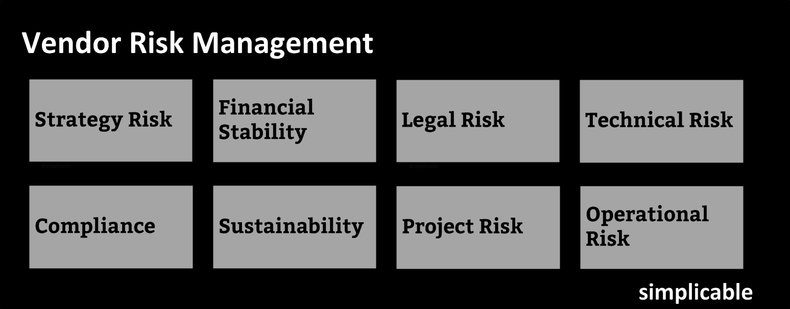

Strategy Risk
Strategic risks of a partnership. For example, the risk that a competitor will gain access to trade secrets.Financial Stability
Investigating the financial stability of partners. A partner that goes into financial distress can disrupt your projects and operations with little hope of remedy.Legal Risk
The risk of legal disputes with a partner.Technical Risk
Technical risks associated with IT services, infrastructure, equipment, software and partnerships. For example, a service that represents an information security risk.Compliance
A vendor's compliance to laws, regulations and standards.Sustainability
You can't claim to be an environmentally responsible organization if you simply outsource things to a partner that pollutes for you. As such, sustainability practices are an increasingly common focus of vendor risk management.Project Risk
Project risks introduced by a vendor such as the depth of their resource capabilities.Operational Risk
Operational risks introduced by a supplier or service provider. For example, risks of a political event that disrupt a supply chain.| Overview: Vendor Risk Management | ||
Type | ||
Definition | The process of identifying and treating risks related to service providers, suppliers and consultants. | |
Related Concepts | ||





















